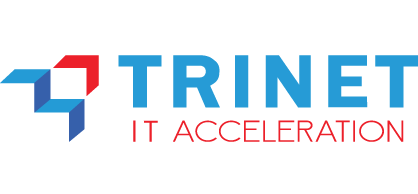Tech Innovation > Digital & IoT > Fiber Optic Campus Backbone
Fiber Optic Campus Backbone
Without this solution, organizations face the following challenges:
Limited Bandwidth and Slow Speeds
Without a Fiber Optic Campus Backbone, organizations struggle with slower internet speeds and limited bandwidth, which can disrupt real-time communications, research, and data-intensive activities across the campus.
Increased Network Complexity
Without fiber optic infrastructure, maintaining a complex network of copper cables and wireless connections can lead to higher operational costs, frequent maintenance issues, and increased downtime across the campus.
Limited Scalability and Expansion
Without a Fiber Optic Campus Backbone, expanding the network to accommodate future growth or new technologies becomes challenging. This limits the ability to scale the network efficiently for a growing campus or institution.

Key Features & Capabilities
Fiber Optic Campus Backbone provides fast, reliable connectivity with scalable network infrastructure.
Show Details
Key Features
- High Bandwidth & Speed:
• Supports Gigabit (Gbps) and Terabit (Tbps) speeds for seamless data transmission.
• Ideal for bandwidth-intensive applications like video conferencing, cloud computing, and IoT. - Long-Distance Connectivity:
• Optical fiber can transmit data over kilometers without signal degradation.
• Perfect for large university, corporate, and industrial campuses. - Low Latency & High Performance:
• Enables real-time communication for VoIP, AI-driven networks, and smart applications.
• Reduces delays in data transmission, ensuring smooth network performance. - Reliability & Redundancy:
• Designed with dual or ring topologies to prevent network downtime.
• Self-healing capabilities in case of fiber cuts or failures. - Immunity to Electromagnetic Interference (EMI):
• Unlike copper cables, fiber is not affected by electrical noise, lightning, or radio frequencies.
• Ensures stable performance in industrial and medical environments. - Security & Data Protection:
• Difficult to tap or intercept, ensuring secure data transmission.
• Supports encryption and access control for enhanced cybersecurity. - Future-Proof & Scalable:
• Supports future technologies like 5G, AI, and cloud networking.
• Easily expandable to meet growing network demands.
Core Capabilities
- Centralized & Distributed Network Management:
• Supports Software-Defined Networking (SDN) for easy control and automation.
• Monitored and managed from a central Network Operations Center (NOC). - Support for Multiple Applications:
• Handles data, voice, video, IoT, AI, and automation simultaneously.
• Enables seamless integration with smart buildings and security systems. - Redundant Pathways & Load Balancing:
• Prevents network congestion and downtime.
• Ensures continuous mission-critical operations in hospitals, universities, and corporations. - Energy Efficiency & Low Maintenance:
• Requires less power compared to copper networks.
• Minimal maintenance with a long lifespan (20+ years).

Business Benefits
Fiber Optic Campus Backbone offers high-speed, reliable connectivity for smooth data transmission.
Show Details
Benefits of Using Fiber Optic Networks
Fiber optic networks offer numerous advantages in terms of cost savings, speed, security, and future-proof capabilities, making them an ideal choice for modern business and infrastructure needs. Below are the key benefits of using fiber optic technology:
a. Unmatched Speed & Performance
- Faster Data Transfer: Fiber optics support Gigabit & Terabit speeds, ensuring seamless communication.
- Low Latency: Ideal for real-time applications like VoIP, AI-driven analytics, and cloud computing.
- Support for High Traffic Loads: Handles large volumes of data without slowdowns.
b. Increased Productivity & Efficiency
- Optimized Business Operations: Employees can access data, cloud apps, and collaboration tools faster.
- Seamless Video Conferencing & Remote Work: No lag in virtual meetings and remote access.
- Faster Cloud Access: Supports cloud storage, SaaS applications, and hybrid IT environments.
c. Cost Savings & Long-Term Investment
- Lower Maintenance Costs: Fiber optics require less maintenance than copper networks.
- Energy Efficient: Reduces power consumption, lowering operational costs.
- Long Lifespan: Durable infrastructure lasting 20+ years, minimizing replacement costs.
d. Enhanced Security & Reliability
- High-Level Security: Difficult to tap or intercept, reducing cybersecurity risks.
- Reliable & Stable Connectivity: Immune to electromagnetic interference (EMI) and weather disruptions.
- Redundant Network Design: Prevents downtime with backup pathways and self-healing capabilities.
e. Scalability & Future-Proofing
- Easily Expandable: Supports future business growth without requiring infrastructure overhauls.
- Ready for Emerging Technologies: Enables 5G, IoT, AI, and Smart Campus applications.
- Supports Multiple Devices & Networks: Manages smart security systems, automation, and enterprise applications.
f. Competitive Advantage & Innovation
- Enhances Customer Experience: Faster transactions, better connectivity, and improved digital services.
- Supports Smart Campus & IoT Initiatives: Enables automation, AI-driven analytics, and smart buildings.
- Improves Business Agility: Adapts to changing technology needs and industry demands.

Use Cases
Fiber Optic Campus Backbone delivers high-speed, reliable connectivity for diverse campus applications.
Show Details
a. Universities & Educational Institutions
- Smart Classrooms & E-Learning: Supports high-speed internet for online classes, video streaming, and cloud-based learning.
- Campus-Wide Wi-Fi: Ensures seamless high-speed connectivity across all buildings and dormitories.
- Secure Data Centers: Facilitates fast data transfers between university departments, research labs, and libraries.
- CCTV & Campus Security: Enables real-time monitoring with fiber-connected surveillance systems.
b. Corporate Campuses & Business Parks
- Unified Communication: Supports VoIP, video conferencing, and cloud-based business applications.
- Enterprise Cloud Computing: Enables fast, secure access to cloud storage, CRM, and ERP systems.
- IoT & Smart Office Solutions: Connects automated lighting, security, and energy management systems.
- Remote Work & VPN Support: Ensures secure remote access for employees working off-campus.
c. Healthcare & Medical Campuses
- Real-Time Patient Data Sharing: Supports fast, secure access to electronic medical records (EMR).
- Telemedicine & Remote Consultations: Enables HD video conferencing between doctors and patients.
- Medical Imaging & AI Analysis: Handles large data transfers for MRI, CT scans, and AI diagnostics.
- Hospital Security & Monitoring: Supports fiber-connected CCTV, biometric access, and IoT healthcare devices.
d. Industrial & Manufacturing Complexes
- Industrial Automation & IoT: Connects smart machines, sensors, and robots for real-time data analysis.
- Supply Chain & Logistics: Enhances warehouse connectivity, fleet management, and tracking systems.
- Predictive Maintenance: Uses fiber-connected AI and machine learning to prevent equipment failures.
- Secure Factory Networks: Supports cybersecurity protections and centralized monitoring.
e. Government & Smart Cities
- Public Wi-Fi & Smart Services: Provides high-speed connectivity for city-wide internet access.
- Traffic & Transportation Management: Powers fiber-based traffic monitoring, smart signals, and surveillance.
- Secure Government Communications: Ensures encrypted data transfer between government agencies.
- Disaster Recovery & Emergency Services: Supports real-time coordination between fire, police, and emergency teams.
f. Military & Defense Facilities
- High-Security Communications: Enables secure, encrypted data transmission for defense operations.
- Remote Surveillance & Monitoring: Supports real-time intelligence gathering and cybersecurity.
- Autonomous Defense Systems: Connects AI-driven surveillance drones, automated security, and robots.
g. Retail & Shopping Malls
- Seamless POS Transactions: Ensures high-speed and secure credit card processing.
- Public Wi-Fi & Customer Engagement: Supports guest Wi-Fi, mobile apps, and AI-driven recommendations.
- Smart Security & Surveillance: Powers HD CCTV cameras and access control systems.

How It Works
Fiber Optic Campus Backbone offers high-speed, reliable internet through advanced fiber-optic infrastructure.
Show Details
a. Network Deployment
-
Fiber optic cables are deployed across the campus to establish a high-speed backbone that connects all buildings, classrooms, dormitories, and administrative offices. The installation begins at a central point, such as a data center or network operations center (NOC), and extends to each individual building through underground or aerial fiber runs.
b. Network Configuration
-
The fiber optic campus backbone uses Optical Line Terminals (OLTs) at the central location and Optical Network Units (ONUs) at each building or endpoint. The OLT connects to the campus core network and distributes data traffic through fiber optic cables to ONUs, which then distribute the data to end-users (students, faculty, and staff).
c. High-Speed Connectivity
-
The fiber optic backbone provides seamless, high-speed internet and network services throughout the campus. Whether for classroom learning, research, or administrative tasks, fiber optic technology ensures that data is transmitted at high speeds with low latency, enabling fast access to cloud-based services, online learning platforms, and large file transfers.
d. Network Scalability
-
The fiber optic campus backbone is highly scalable, allowing the network to expand as the campus grows. New buildings, dormitories, or campus facilities can be easily added by extending the fiber infrastructure and connecting them to the existing network, providing seamless integration and high-speed connectivity across the entire campus.
e. Redundancy & Reliability
-
To ensure continuous network operation, the fiber optic campus backbone includes redundant paths and equipment. This setup minimizes the risk of network outages, providing automatic failover in case of a connection failure, ensuring that the network remains up and running at all times.
f. Network Monitoring & Management
-
The entire fiber optic backbone is continuously monitored through a centralized Network Management System (NMS). This system tracks network performance, identifies bottlenecks, monitors traffic, and alerts administrators to potential issues, enabling quick troubleshooting and proactive maintenance.
g. Security & Data Integrity
-
Fiber optic technology offers a secure communication channel, as data transmitted over optical fibers is difficult to intercept. The network is equipped with robust security protocols to protect sensitive data and ensure the integrity of communication across the campus. Encryption and firewall systems are used to safeguard campus data from unauthorized access.
h. Maintenance & Upgrades
-
Regular maintenance ensures the fiber optic campus backbone continues to perform optimally. This includes routine inspections, network upgrades, and firmware updates. Fiber optic cables and network equipment are checked for performance and are upgraded to accommodate future network demands, such as faster speeds and more bandwidth.
Contact our experts for further information
CONTACT US












